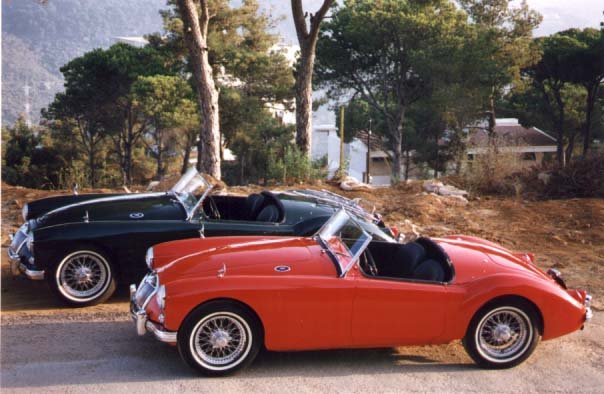
"Who invented the motorcycle?" That should be a simple answer to a simple question. But the answer to "who invented the motorcycle" is quite complicated.
There was a debate among historians on who invented motorcycle. One group argued it was Sylvester Howard Roper, who invented the steam powered motorcycle in the year 1867. Second group stressed it was Gottlieb Daimler who invented the first gas-engined motorcycle in 1885.
Gottlieb Daimler who invented the first gas powered motorcycle in 1885, had one wheel in the front and one in the back, and a smaller spring-loaded outrigger wheel on each side. Daimler's motorcycle was built of wood with iron banded wooden spoked wheels. Motorcycle invented by Gottlieb Diamler was built on the "bone-crusher" chasis. It was indeed powered by a single-cylinder Otto-cycle engine, and had a spray-type carburetor.
Next notable invention in the motorcyle came in 1892 with the introduction of Millet. It used a 5-cylinder engine built as the hub of the motorcycle rear wheel. The cylinders rotated with the wheel, and its crankshaft constituted the rear axle.
The first known production of a two-wheeler was the Hildebrand & Wolfmueller in Germany in 1894. This motorcycle sporting a step-through frame, with frame mounted fuel tank on the downtube. The motorcycle engine was a parallel-twin, mounted low on the frame, with its cylinders going fore-and-aft, and was water-cooled. The water tank/radiator was built into the top of the rear fender.
In 1895 French firm DeDion-Buton invented a motorcycle engine and mass produced the motorcycle engine and peeved the way for the common use of motorcycle. Metz Company made the first USA production motorcycle called Orient-Aster in 1898. The Aster engine used in the motorcycle was a French-built copy of the DeDion-Buton.
American Invention, Production and improvement of motorcycle skyrocketed with the launch of Indian in 1901 and Harley Davidson in 1902.
In Modern America, Indian was the only motorcycle manufacturer among the crowd of 20 odd which was competing with Harley Davidson. Indian Motorcycle was invented by a young self-taught engineer and builder of racing bicycles named Oscar Hedstrom. Oscar and entrepreneur George Hendee came together to build the first Indians out of the Hedstrom's design. This Indian motorcyle invented by Hedstrom was powered by copy of DeDion-Buton engine and an excellent carburetor rolled out in 1901. At one time Indian was largest motorcycle manufacturer in the world rolling out 20,000 motorcycles per year.Indian motorcycles strongly supported racing during this period as a way to improve their product and to present it to the buying public. The Indian factory motorcycles dominated all forms of racing in the US, and in 1912, Indians won first, second and third at the Isle of Man TT. Indian motorcycle engineering department invented new models and variants of motorcycles and continued to roll out excellent motorcycles off production lines. Model such as the much-beloved model 101 Scout of 1919, the original Chief of 1920, and the highly successful Sport Scout of 1935. Indian also acquired a magnificent four-cylinder bike in 1927 by buying the tools, dies, and assets of the Ace Motorcycle Company.
In 1903, 21-year old William S. Harley and 20-year old Arthur Davidson invented the first production Harley-Davidson® motorcycle. The newly invented harley-davidson motorcycle was built to be a racer, with a 3-1/8 inch bore and 3-1/2 inch stroke. The factory in which they worked was a 10 x 15-foot wooden shed with the words "Harley-Davidson Motor Company" crudely scrawled on the door. The only American motorcycle manufacturer still in existence from the early days is the Harley-Davidson Motor Company, which celebrated its centennial in 2003.
In 1910 The Belgian arms company FN invented the first 4-cylinder motorcycle. This newly invented motorcycle was named FN and it had a shaft drive.
In 1914 Triumph Tourist Trophy-Type G motorcycle was invented and manufactured specifically for the dirt track at IOM. This newly invented motorcycle was a single cylinder, 4 horsepower, 4 stroke engine of 550cc with a 3 speed transmission. It featured adjustable tappets and a side by side valve placement. This motorcycle used an Aster engine that was copy of the DeDion-Buton.
In 1918 Cleveland Motorcycle Company built a 2 stroke lightweight motorcycle- almost an exact copy of Triumph's Junior model. It continued production of the motorcycle until 1924.
This motorcycle sported a coil producing spark, a two speed lever hand operated transmission that could reach a speed of 45mph.
GOTTLIEB DAMILER, GAS POWERED, 1885




-01.jpg)
-16.jpg)












































